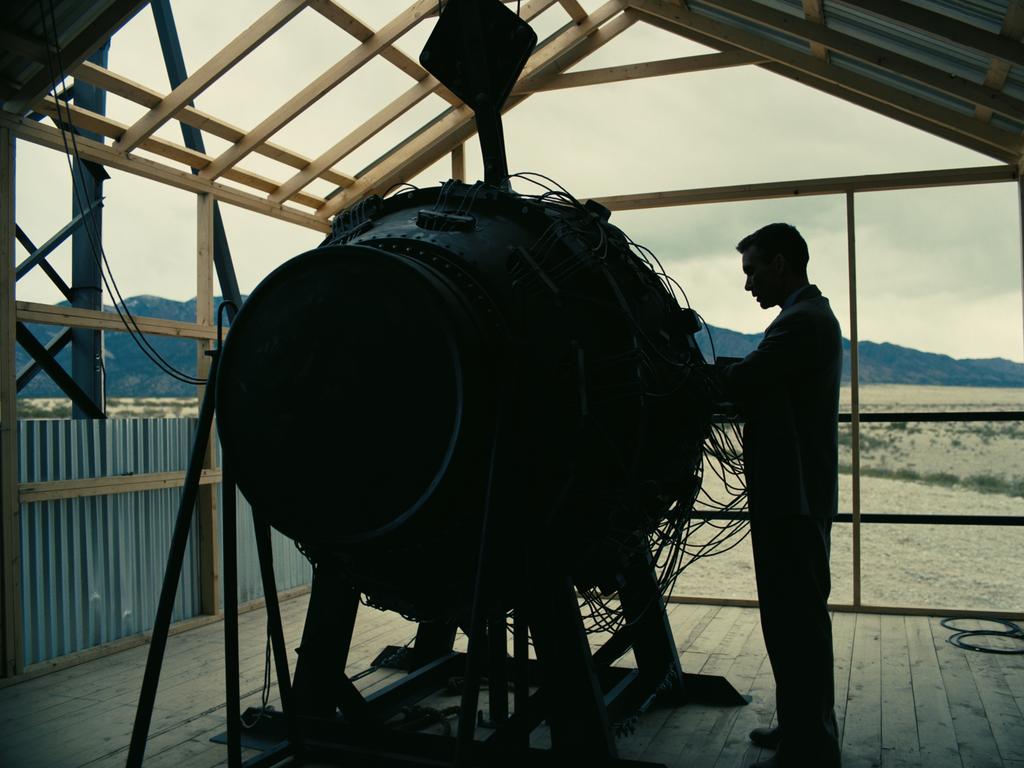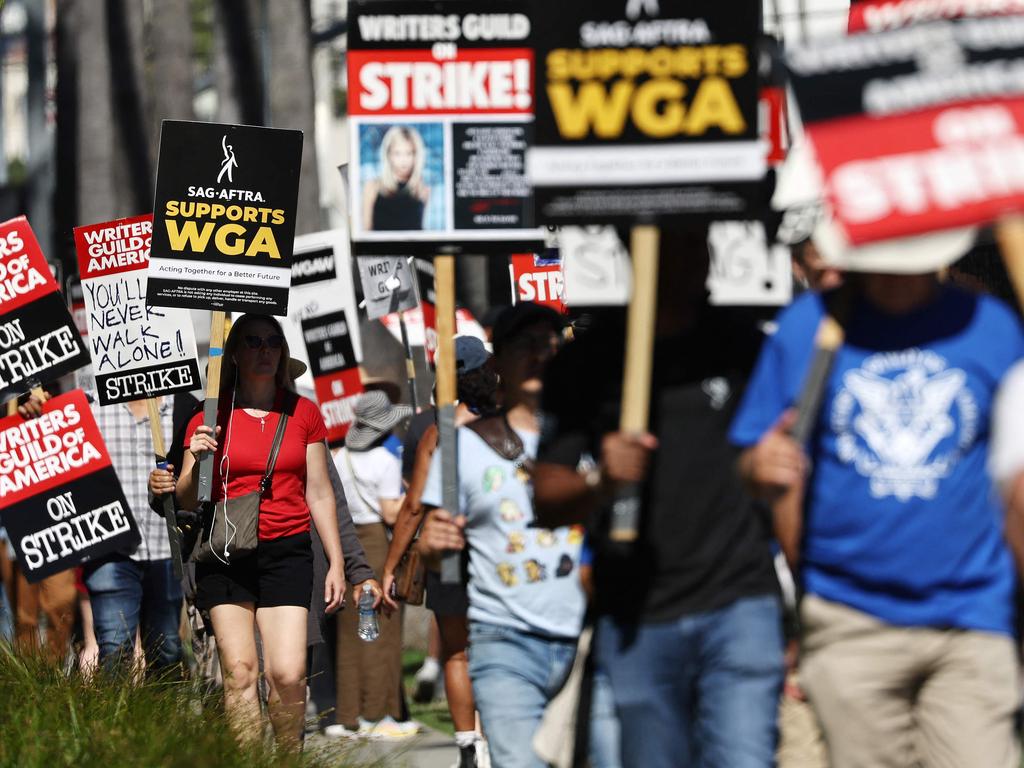Hollywood actors’ strike about more than money, it’s about the future of entertainment
With star power on their side, writers and actors seem to be winning, for now, in the epic tinseltown divide over ‘generative AI’ and money.

Looking from afar at the civil war tearing Hollywood apart – striking actors and screenwriters on one side, mighty corporations on the other – my thoughts strayed to another seismic event in movie history. Sixty years ago this summer, Soviet filmmaker Sergei Bondarchuk began filming the greatest battle scene put on screen: a huge reimagining of the Battle of Borodino for his epic seven-hour adaptation of Tolstoy’s War and Peace. It required 13,500 soldiers (lent by the Red Army for three months), 1500 horsemen, 10,000 smoke grenades and another army of backroom technicians making everything from Napoleonic-era costumes to hundreds of authentic early 19th-century cannons.
I wonder what a modern-day Bondarchuk would need to create the same level of spectacle. Probably about 20 actors. No outdoor locations. No Red Army. Not a single smoke grenade. Just a handful of technicians generating the whole thing on their computers, probably in a few days.
And that would be merely by using technology already several decades old. What’s available now or very soon, we are told, are AI programs that can convincingly replicate lead actors, visually and verbally, and write their scripts as well. And all at a fraction of the cost, and an even smaller fraction of the time, that would be required for that increasingly redundant species called human beings to do it.

This startling advance in AI – and its alleged potential to wipe out not just humanity at large, but (even more distressingly to showbiz folk) many of the jobs generated by film and TV – is a big factor in the strike begun by 11,500 members of the Writers Guild of America at the beginning of May, who were joined last week by 160,000 actors in the powerful American Sag-Aftra trade union. They argue they haven’t been given enough guarantees that they will be needed in an AI-dominated future.
The actors also suggest they are already being pressured into signing away the rights to their own images – their faces, bodies and voices. These could then be stored electronically and manipulated by AI to produce future fodder for the eternally hungry streaming sites, perhaps even after the actors concerned have retired or died.
“It’s as if 19th-century body snatchers like Burke and Hare have been signed up to generate movies for Netflix,” says an actor friend with a penchant for slightly unexpected historical parallels.
Those on the other side of this dispute – the studios and streaming corporations that make up the Alliance of Motion Picture and Television Producers (AMPTP) – claim they have offered “groundbreaking protections” to actors regarding future use of their images.
The problem, though, for both sides, is at this point in the lightning-swift development of “generative AI” it’s hard even for experts to say what will be technically possible, or commercially feasible, or “standard practice”, in the next few years. So there is no consensus about where the red lines should be drawn, especially as many run-of-the-mill films and TV series we get on our screens are already very derivative and formulaic. As the screenwriter Larry Gross put it: “The worst thing about movies today is that they feel like they’re being written by computers already.”

Trying to pin down what generative AI can or should do is one big aspect of this industrial dispute. The other is no less intractable. It’s money. The writers and actors have an unshakeable belief they are being ripped off by the big studios. “We are being victimised by a very greedy entity,” Fran Drescher, the president of Sag-Aftra, says. One of the writers’ leaders, Liz Alper, goes even further. She declares the actors and writers are striking for “all the workers across America who have been hurt and disenfranchised by Wall Street and big tech”.
Well, believe that if you wish – but they are primarily striking for more money in their own pay packets. The actors’ union is demanding an immediate 11 per cent increase in basic rates; AMPTP is offering 4 per cent. So there’s a big gap there. But the union’s other demand is an even bigger sticking point. It’s for actors to get an unprecedented 2 per cent of the revenue generated by streaming shows.
As you might expect, the big streaming companies are aghast at the prospect. Which side has the better arguments? That’s hard to answer because the financial picture on both sides is so complicated. When the general public thinks of “Hollywood actors” the image is of a super-rich elite living in gated mansions in Beverly Hills. And it’s true that the boom in streaming over the past few years has been a bonanza for star actors, who can command $US30 million ($44.3 million) or more for a single project.
Further down the profession, however, the picture is far less rosy. For an actor with a few lines to say in a TV series or feature film the going rate is about $US1100 for a day’s work.

If you were guaranteed 200 such days every year, that would be handsome reward but the one thing everyone knows about acting is that you spend most of the time waiting for the phone to ring or auditioning, mostly unsuccessfully (and the hated trend towards virtual auditions is another sore point for actors).
As for actors who work as extras, they may get as little as $US200 a day, though probably more if they are in the union. Joining Sag-Aftra, however, costs $US3000 upfront, plus $US232 and 1.5 per cent of an actor’s earnings each year, leaving not a lot of take-home pay. Little wonder the majority of American actors consider themselves to be on the breadline.
What, though, of their employers: the big studios and the Wall Street financiers who bankroll them? Does the accusation that they are exploiting their writers and actors while creaming off huge profits stand up to scrutiny?
Again, it’s a complex picture. Take the Walt Disney Company, the giant entertainment corporation celebrating its 100th birthday this year. On the face of it, it is indeed a fat cat making large profits for its shareholders. It achieved a 13 per cent increase in its earnings last quarter, taking them to a staggering $US21.8 billion.
That increase, however, was entirely driven by its theme parks and resorts. Its streaming channels, notably Disney+, fared far less well, losing four million subscribers over the same quarter. Now it is committed to saving $US5 billion in costs by consolidating its movie and TV production houses, laying off 7000 staff worldwide and going down the dangerous route of increasing subscription rates while (in the words of its controversial chief executive, Bob Iger) “spending less on what we make, and making less”.

In other words, Disney is not a company in the mood to give a handsome pay rise to writers and actors. On the contrary, Iger rarely misses the chance to tell them to “get realistic” about the problems faced by the streaming giants.
Those problems are even more acute at other companies. Paramount Global has cut 25 per cent of its staff and is said by some industry sources to be facing an “existential crisis”. Warner Bros Discovery has run up an astonishing $US50 billion of debt. Netflix had a disastrous start to 2022, losing nearly a million subscribers in a few months, though its campaign to crack down on illicit “password sharing” seems to be paying off and its subscriber figures are slowly rising again.
All of these companies face essentially the same problems. They borrowed massively to fund a lot of new programming when streaming was seen as the goose that would eternally lay golden eggs. Now, though, subscriber numbers have hit a plateau, cinema attendances are still well below pre-pandemic levels and that debt mountain has to be serviced.
So who will blink first, the studio executives or the talent on which, for now, they depend? For the moment, at least, the writers and actors seem to be winning the PR war, not least by deploying some very famous faces on the picket lines. The studios, however, could play a long game by refusing to come to the negotiating table for months – not just to bring actors and writers to the brink of personal financial ruin, but also to break the power of the unions inside Hollywood.

Do they have the resources for that? It’s true that production will stop on many big movies and TV series (see the panel, right), and that may upset their audiences. It’s also true that actors will refuse to co-operate on doing publicity for newly released product, so expect to see far fewer media interviews with stars with a new movie to plug. The only movies likely to be made in America in the near future are independent projects with producers not affiliated to AMPTP, and thus approved by Sag-Aftra.
But Netflix in particular has a lot of production work going on outside America, where actors and crews are not affected by the strike. And as was seen during the pandemic, unexpected hits such as the French comedy Call My Agent!can be created when non-Hollywood product is suddenly given a lot of attention.
What effect will the strike have in the UK? British actors’ union Equity is not involved in the strike (and under UK law cannot get involved) so British actors and crew can continue working as normal, even on American productions being filmed here. However, Equity has arranged “rallies in solidarity” with its “sister union” and issued a statement claiming that it, too, “is experiencing bullish engagers attempting to undermine its collectively bargained agreements”.
When it comes to renegotiate its own agreements with TV and film producers, it will be fighting exactly the same battles as the American unions are doing. With an added twist: Hollywood may have its money problems, but the economic outlook on this side of the Pond is far worse.
The Times







To join the conversation, please log in. Don't have an account? Register
Join the conversation, you are commenting as Logout